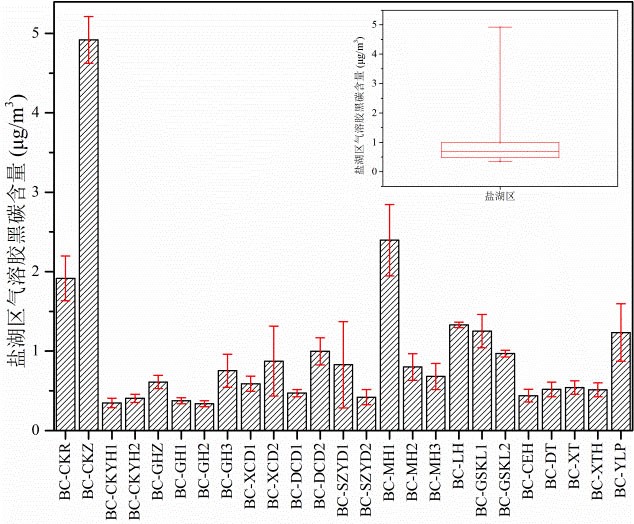Black carbon generally refers to an impure carbon-containing mixture produced by incomplete combustion of fossil fuels or biomass. It has special physical and chemical properties and exhibits different environmental geochemical behaviors and environmental effects in different environmental media. Studies have shown that about 80% to 90% of the black carbon produced by combustion or oxidation remains directly in the soil, becoming an important part of soil organic matter, and the rest is released into the atmosphere. After a series of natural effects, black carbon will eventually be deposited and preserved in soil and other media in different proportions. Black carbon is widely distributed in the atmosphere, soil, sediment, ice and snow, and has become one of the hotspots in the fields of soil science, atmospheric science, geochemistry, environmental science and ecology at home and abroad.
Black carbon is an important part of the atmospheric aerosol, and it is the most absorbing component of the aerosol in the atmosphere. Aerosol black carbon is closely related to global warming, crop yield reduction, atmospheric persistent organic pollutants, etc. It may have a negative impact on terrestrial and aquatic ecosystems, and has attracted widespread attention. In addition, black carbon is highly chemically inert and porous, and can absorb organic pollutants and heavy metals in the soil, but it will affect the degradation rate of organic pollutants. Black carbon can also change soil fertility and structure, and affect soil microbial communities and ecological environment. Therefore, in-depth and comprehensive study of the temporal and spatial distribution of black carbon in soil and its impact on the physical and chemical properties of soil, to clarify its environmental and ecological effects, which has important scientific significance for soil pollution remediation and sustainable agricultural development.
In response to the above scientific issues, the team of Professor Wu Jun of the Qinghai Salt Lake Institute conducted a key investigation on the distribution characteristics of black carbon in the soil and the exchange characteristics of black carbon in the salt lake area of ??the Qaidam Basin. The results show that: 1) The soil black carbon content and aerosol content in the salt lake area of ??the Qaidam Basin are relatively high, indicating that the massive exploitation of salt lake resources and industrial production activities may be an important factor that causes a large amount of black carbon emissions in the study area. In addition, the existence of "plateau effect" may also cause the increase of soil black carbon content in the study area; 2) The range of soil black carbon δ13CBC value in the salt lake area of Qaidam Basin ranges from -25.33‰ to -23.46‰, which may reveal that the source of soil black carbon in the study area may be jointly affected by C3 plants and fossil fuel sources; 3) Although the results of studies on the exchange behavior of soil total black carbon and soot components black carbon and aerosol black carbon at the rustic interface are different using different KOA values, there are indeed obvious and frequent black carbon rustic exchanges behavior in this area. These results will provide basic data for the study of black carbon geochemical behavior in the Qinghai-Tibet Plateau. For details, please refer to "Research Highlights" of the first issue of the geosciences in the "Salt Lake Research" in 2020: 1-10.

The aerosol black carbon content in the salt lake area of Qaidam Basin